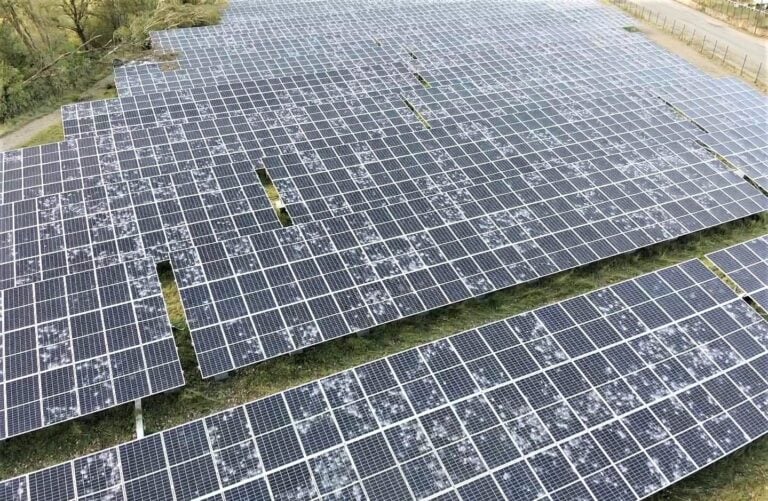A key element of energy innovation, the photovoltaic cell converts light into electricity through the photovoltaic effect. Composed of thin layers of stacked silicon, it captures light energy to generate electric current. Versatile and efficient, it operates even under cloudy skies, although its efficiency is reduced. Each technological advancement in this field revolutionizes our ability to produce clean energy, making solar panel solutions increasingly accessible and effective.
A photovoltaic cell, also known as a solar cell, is an electronic component that, when exposed to light, produces electricity through a process called photovoltaic effect. The cell is the fundamental element of solar panels and plays a crucial role in converting solar energy into electrical energy.
The heart of the photovoltaic cell consists of semiconductor materials, primarily silicon, arranged in thin stacked layers. Silicon, an abundant material on Earth, has optimal properties for converting light into electricity. The thickness of these layers is on the order of a millimeter, making the cells very thin while still being efficient.
The operating principle of a photovoltaic cell is based on the interaction between sunlight and the semiconductor. When photons, particles of light, strike the surface of the cell, they transfer their energy to the electrons in the silicon. These excited electrons leave their initial position, thereby generating an electric current. This concept relies on the creation of electron-hole pairs, allowing free electrons to flow and produce a voltage.
Even when the sky is cloudy, photovoltaic cells continue to produce electricity. However, their efficiency is lower compared to a sunny day. The efficiency of a cell depends on various factors, such as the quality of the semiconductor material, light intensity, and the angle of incidence of sunlight.
There are several types of photovoltaic cells, each with specific characteristics. Monocrystalline cells, for example, are made from a single crystal of silicon and offer high efficiency but are more expensive. Polycrystalline cells, on the other hand, consist of several crystals of silicon and are generally less costly, though their efficiency is slightly lower. Finally, thin-film cells use other semiconductor materials like cadmium telluride and are more flexible and lightweight, although they have lower efficiency.
The assembly of many photovoltaic cells forms a solar module, and several combined modules constitute a complete solar panel. Next-generation solar panels adopt advanced technologies to improve energy conversion efficiency, boosting energy production. To learn more, check out our article on next-generation solar panels.
The solar industry is experiencing rapid growth with ambitious projects like the installation of 52 billion solar panels to cover America. This expansion is made possible by pioneers like Michael Polsky, who have enabled significant advancements in this field.
For more information on photovoltaic sensors and their evolution, feel free to explore our resources at this link and follow the evolution of solar energy.

FAQ
Q: What is a photovoltaic cell?
A: A photovoltaic cell, or solar cell, is an electronic component that, when exposed to light, produces electricity through the photovoltaic effect. Composed mainly of thin layers of silicon, it converts light energy into electric current.
Q: How does a photovoltaic cell work?
A: A photovoltaic cell transforms light energy into electricity. When exposed to light, the photons in the light strike the silicon atoms, releasing electrons that generate electric current.
Q: What are the types of photovoltaic cells?
A: There are different types of photovoltaic cells, including monocrystalline silicon cells, polycrystalline silicon cells, and thin-film cells. Each type has its own characteristics and efficiencies.
Q: What is the efficiency of a photovoltaic cell?
A: The efficiency of a photovoltaic cell varies depending on the type of cell and sunlight conditions. Generally, monocrystalline silicon cells offer the highest efficiency, reaching up to 22%, while polycrystalline and thin-film cells have slightly lower efficiencies.
Q: Do photovoltaic cells work in bad weather?
A: Yes, photovoltaic cells generate electricity even in cloudy weather. However, the efficiency is lower compared to sunny days.
Q: What is the thickness of a photovoltaic cell?
A: A photovoltaic cell typically has a thickness of about one millimeter, consisting of several thin layers of stacked silicon.
Articles similaires
Thank you!
We will contact you soon.













